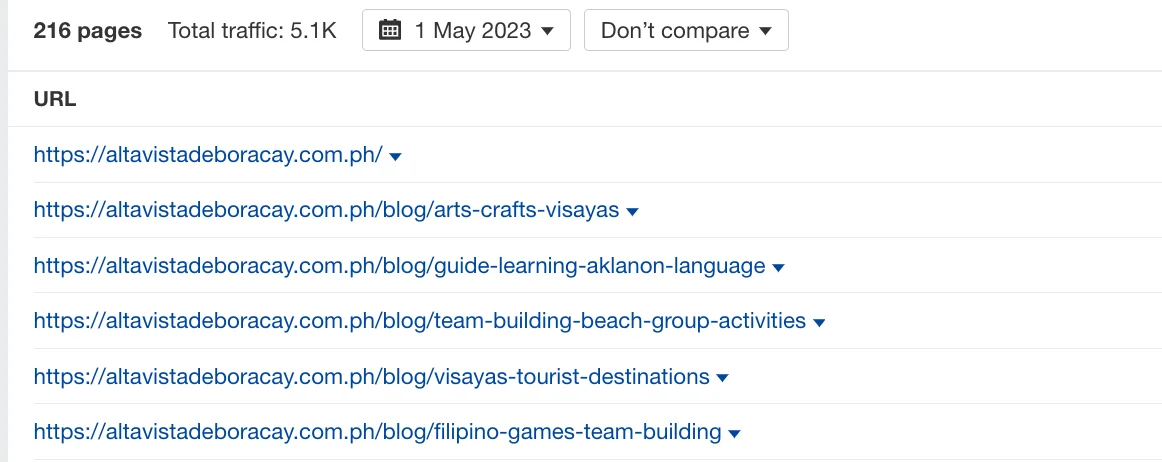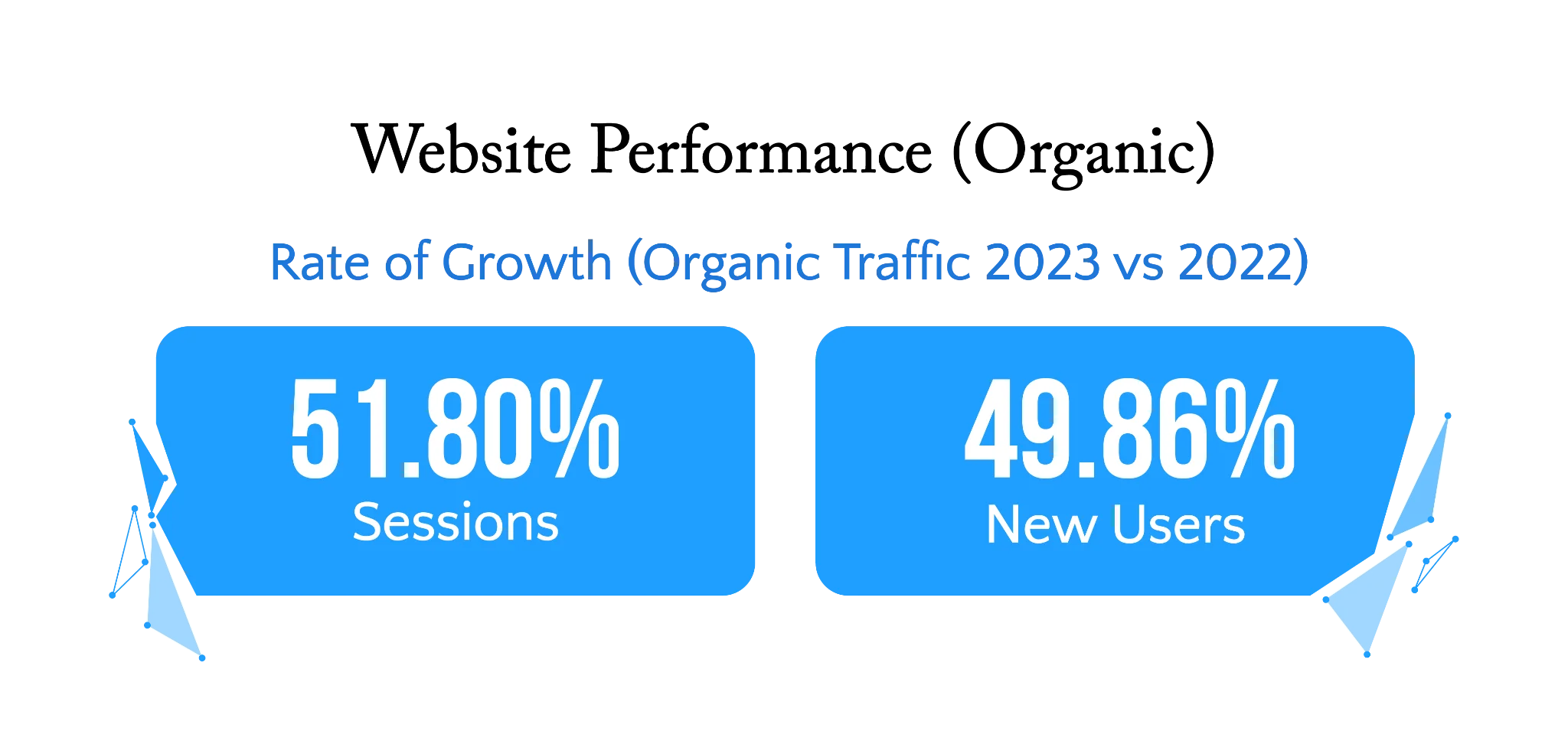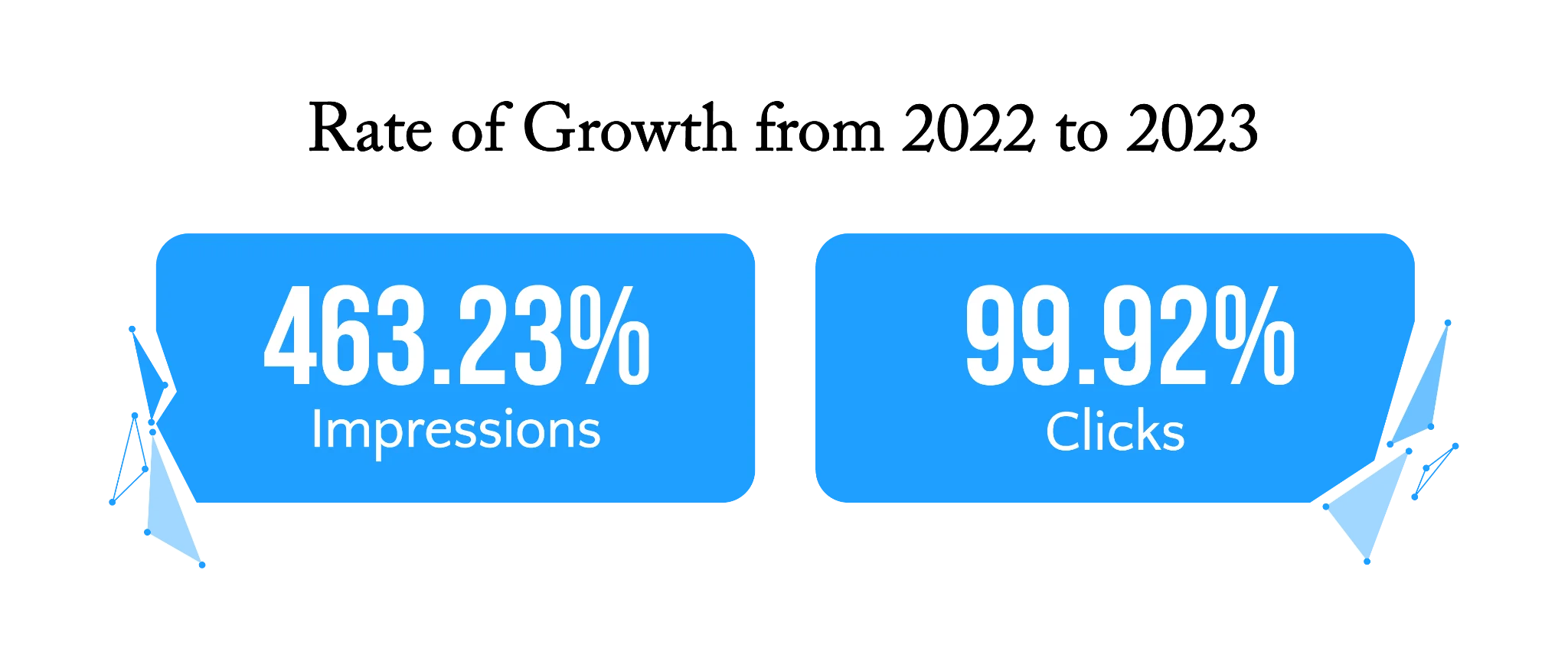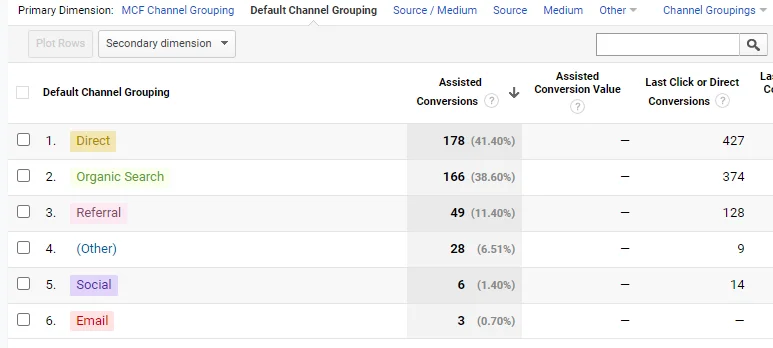How to Successfully Write Blog Articles That Promote Businesses
Author & Editor
Content Team Lead
Published on: Apr 30, 2021 Updated on: Jul 11, 2024

Table of Contents
To thrive is to be seen, and to get attention from your ideal customers you need to be on top of search results. I know it’s not easy to achieve, but one of the most effective ways to get noticed is to write content— and we mean a lot of it.
Don’t think this just involves quantity. Since Google’s updated content guidelines highlight the importance of Experience, Expertise, Authority, and Trust or E-E-A-T the amount of content doesn’t cut it. Quality is the key!
There are a few guidelines and even criteria to satisfy the needs and wants of your readers and the algorithm. But don’t fret, help is here. With our experience as a content marketing agency, we can guide you through it all.
Why should you create blogs?
In Propelrr’s Digital Marketing Framework, Content is one of the most important levers to consider in your strategy— and that’s proven time and again.
According to the Content Marketing Institute’s 2024 trend report, 84% of B2B marketers report that content marketing helped generate sales/revenue in the last 12 months, up from 42% the previous year.
While Robin Miller of LinkedIn mentioned Businesses that prioritize blogging see 13 times more positive ROI and generate 67% more leads monthly compared to those without blogs.
From our experience as well, doubling down on our content production allowed us to expand our search presence in keywords relevant to our services and offers. This led to our continuous growth and increase in Organic Traffic performance and even improving our lead acquisition in the long run— but we’ll get back to that in a bit.
Let us walk you through how we do blogging to promote our business:
How we write blogs to promote your products and services?
Effective blogs are essential for your brand's website, driving significant benefits in website traffic and lead generation. See how we do it here at Propelrr:
1. Set your content and blog’s objectives.
Objectives help you navigate in which direction you want your blog post to go. Aside from promoting your business, you can set other goals for your blogs that will have a direct impact on your businesses like:
- Website Engagement (Engagement Rate, Time on Page)
- Search visibility (Share of Voice on Search, Average Position)
- Authority Metrics and Signals (Backlinks, Reviews)
You can also set specific goals that will help you plan your content creation process. This includes what to write, how to write, when to write, for whom to write, and why you should write.
Take, for example, the Propelrr blog, The TAO of All Thing Digital, of journalistic objectives include:
- WHAT: We want to create articles that speak about our experiences on different topics about digital marketing and tech.
- HOW: Our team of digital marketing and tech professionals already have 25+ year’s worth of experience in the industry among different industries and verticals COMBINED that I’m sure you’d want to know more about.
- WHO & WHY: We aim to reach YOU— digital marketers, marketing-tech professionals, and even brand managers who want leverage on their digital channels.
With those in mind, we craft our objectives for our articles and blog pages to:
- Expand our Share of Voice on Search through valuable and relevant content to our target audience; and,
- Build authority by having our team members write about their own experiences on the brands we’ve worked with.
We aim to increase Search Visibility and Authority (Impressions and Average position), which are good starting points for building a community and following that’s invested in what we have to say.
How they go down the pipeline to conversion is a different story itself.
2. Set a benchmark of what you want to achieve for your blog
Once you have set your goals, you have to set a benchmark for your blog. Set an ideal estimation performance of your blog and compare it against the average six-month performance of your articles.
Some metrics and analytics platforms you can look into are:
- Average Position via Google Search Console
- Share of Voice on Search via Ahrefs Rank Tracker Data
- Organic Traffic from blogs via Google Analytics 4
- Number of Referring Domains via Ahrefs
Here at Propelrr, our benchmarking process begins by collecting a year’s worth of data* and adding the target percentage we want to achieve for the year.
We set it up with a whole year’s target that’s broken down into monthly targets since we review our performance on that cadence.
Here’s an example of the metrics we’re tracking and their target vs. actual computation:

After establishing benchmarks and collecting data on your blog's performance, you can use this information to refine your strategies and content. Analyze the data to identify trends, understand what resonates with your audience, and adjust your goals and benchmarks accordingly.
REMEMBER: There is no one perfect way to benchmark. But use data you think is valid and set benchmarks that make the most sense to you logically.
3. Know your audience and write for them
One of the most valuable tips in writing a business blog is learning how to write for your audience, not for yourself. Familiarize yourself with your audience and know which topics appeal to them.
To get to know your audience, it is best to craft your ideal persona or research about them. Based on the products and services that you offer, think of someone more likely to need your business. Simply put, personas represent your ideal target market based on research and data gathered.
Let’s look at an example from tour operator software Tourwriter and their blog, below. Can you guess who they’re trying to talk to in their blogs and other content on the website? Off the bat, you can tell that they want to talk to tour operators, and the communication – from the tone to the messaging – is consistently observed on all their pages.

As you can see from the titles of their blog posts, it’s well-targeted to their market of tour operators which they would like to offer their solutions for. Photo courtesy of Tourwriter.
Get to know what your audience wants through various means, especially including data analytics in the mix. You can use Google Analytics to see the demographics of your audience, including their age range, gender, and general interests. You can also use other tools to determine what device your target audience uses. Are they new or regular visitors? How did they find your website? What keywords do they use?
If you have good traffic on your website and would like to know what type of blogs to include to promote your business, it is best to conduct a short survey or ask them for feedback regarding what else you can do for them. Once you’ve received their feedback, process the findings first and then apply these to your blog strategies.
4. Do a keyword research
Knowing who your audience is and what they want isn’t enough to craft effective content. Before you start ideating content topics, it is best to do keyword research first.
You can focus on long-tail keywords which are more specific and are more likely to be used by your target audience to arrive at the specific content they’re looking for.
Here’s a simple example of a short-tail keyword versus a long-tail keyword:
- Short-tail keyword: Business blogs
- Long-tail keyword: How to write a business blog
As seen in the example above, short-tail keywords are more general while long-tail keywords are more specific. Because they are more specific, they may have less traffic BUT, usually, using this type of keyword in your business blog results in a higher conversion value because they have less competition.
To help you with your keyword research, here are some tools you can use:
- Soolve
- Google Search Console
- Ahrefs Keywords Explorer
- Google Keyword Planner
- KewordTool.io
- Moz Keyword Explorer
When selecting keywords, it’s crucial to align them with the specific goals, audience needs, and unique value propositions of the business. We begin by thoroughly understanding the brand's market position, target demographics, and customer pain points. This involves extensive market research and discussions with stakeholders to pinpoint the core aspects of the brand's offerings.
This ensures that the keywords not only attract traffic but also align with the specific interests and needs of potential customers, leading to higher engagement and conversion rates.
Here are some screenshots that illustrate how we identify and analyze these keywords:

By leveraging these tools, we can strategically choose keywords that drive meaningful traffic, enhance brand visibility, and ultimately support the business objectives of our brand and clients.
5. Ideate content with your audience in mind
Equipped with knowledge of your audience and guided by relevant keywords, now’s the time to think about the actual content of your blog.
When thinking about topics, you can start with the basics. For example, create content on FAQs your audience always inquires about. This may also include how-tos and other tutorials.
When ideating, it also helps to look at the calendar. Are there upcoming holidays or important events for the month? Take for example our work with Wacoal:
October is Breast Cancer Awareness Month, since Wacoal’s main product is bras and undergarments, especially one made specifically for breast cancer patients and survivors, we made sure to connect our audience with an article for ALL WOMEN since they are susceptible to this disease:

We both hit the mark by relating to Wacoal’s main audience of women, spreading awareness about the brand’s advocacy for women, and even getting a chance to highlight a relevant product that they have without sacrificing relevance.
REMEMBER: Writing blogs for specific holidays should be aligned with your goals and your business. Always look into your calendar to make sure that you have timely and seasonal content on your website.
6. Write valuable and informative content
When you ask content marketing experts for advice about how to write a blog to promote your business, they say that producing evergreen content or articles that are always relevant is the best way to maximize the lifetime value of your content.
Examples of evergreen content are:
- Frequently Asked Questions (FAQs)
- How-tos to do or practice a certain task
- Tutorials on how to perform a certain task or process
- Research-based articles like data and case studies
One example of our work that created evergreen content is for Alta Vista de Boracay:
The tourism industry, especially in Boracay Island, has had tough times with its environmental rehabilitation and the health crisis that restricted travel in many parts of the world. Propelrr has been creating content for the rest before those events and has invested in some timeless evergreen pieces that are relevant to Boracay itself and some with local PH travel:

Even though the resort has paused operations at the height of the pandemic, when you look at their Organic Search Performance you can still see their presence in where it is most needed. So now that they’re back and running, they don’t need to start expanding their brand presence from the ground up. They just need to jump back at it and accelerate.
Another tip you can apply when ideating content is to fill in the content gap or write about what has not been covered yet. Determining the gap may take some extra effort but it is surely worth it. One strategy you can use when determining the gap is to conduct research, analyze your competitors, look for loopholes you can fill in, and put yourself in the perspective of your audience.
REMINDER: You shouldn’t miss in citing relevant works to your article! Check out our on-page SEO checklist to see our recommended best practices.
7. Create appealing visuals to accompany your content
Visuals make the information you present easier to digest and more fun to consume. After all, human beings process visual information more efficiently than text. Words can be a bit overwhelming or daunting. Select visuals to accompany your words. The more engaged your audience is, the more time they spend on your page.
Visuals you may include in your content are:
- Photos
- Videos
- Quotes
- Data table
- Infographics
- GIFs
- Memes
- Screenshots
No need to look further, we’ve been providing you the images to showcase our works but also let you see we’ve done.
8. Promote your blog via authority building
Promoting your blogs via ethical link-building practices is a good strategy to expand your content’s relevance. Here are some strategies you can do so that external sites will link to your website:
- Create unique, high-quality, and useful content. Once people see that your blog is worthy of sharing, they will be compelled to share it with others or link to it when creating their content.
- Look for and create relationships with popular bloggers and influencers in your niche. Ask them to review or mention your product and services on their blogs, vlogs, and social media.
- Reach out to webmasters and negotiate to add relevant links back to your website. Pro tip: Make sure that the websites that will link to your website are in the same or related industry to gain more relevance and ranking.
Earning links is a tedious process, but it is worth it.
9. Promote your blog on social media
What better way to make your blog post more accessible than promoting it on your company’s social media? Posting timely articles and posts on your business’s social media accounts is also an effective social media strategy to make your business well-known in a larger market.
Repurposing content is a great way to promote your main article or content page. By transforming your original content into different formats, such as infographics, videos, or social media posts, you can reach a wider audience and keep your message fresh.
When sharing your blog on social media, craft an eye-catching post and link your blog to the post. Because social media platforms are often different from one another, it is best to fit your post based on the specialization of the platform you are using. This approach not only maximizes the impact of your original content but also ensures you get the most out of your content creation efforts.
10. Monitor your blog’s performance and experiment
To ensure the effectiveness of your forum engagement strategy, it's essential to conduct regular reviews of your performance and impact. Set monthly reviews to evaluate key metrics such as Search Impressions reached, the level of engagement generated, and the traffic driven to your website. Analyzing these metrics will provide valuable insights into the effectiveness of your content and drive you to experiment and conduct SEO testing.
Based on the findings from these tests, will help you determine if your strategies are working well or not. With the data collected, you can make informed decisions about the type of content to prioritize moving forward. When you align your content decisions with the trends and interests observed in forums, you can better meet the needs of your audience and maximize the impact of your content marketing efforts.
How Propelrr used blog articles to improve Customer Life Value
Organic Traffic is the lifeblood of Propelrr as a digital marketing agency. It’s been our main driver of traffic and lead acquisition for years. But with the change in the Search landscape and through our internal audits, we saw that our content was a bit too thin which limited our coverage on topics that are most relevant to Propelrr and our services.
To address this, we ran an experiment that doubled down on our content production to expand our search presence in relevant keywords. We ideated, produced, and published articles ranging from digital marketing, web development, SEO, social media marketing, and even mentioning Conversion Optimization— the latest business development we’ve been working on.
We produced around 158 articles for the whole of 2023, which resulted in our continuous growth and increase in Organic Traffic performance in 2023 versus the previous year:

The same and continuous content production efforts produced great results for our search performance, with a clear growth from 2022 to 2023:

Other than improving Website and Search performance, our Organic and Referral Traffic are the primary drivers of converted leads with an average Customer Life Value (CLV) of ₱15 million per converted lead.

I didn’t bluff when I said Propelrr knew what we’re talking about.
So charge it to our experience, you can do it too with the tips we’ve mentioned.
Key Takeaways
Writing blogs to promote your business may be a long-game strategy, but its rewards are tremendous and consistent. Keep in mind the following as you seek to promote your business online through blogging:
- Write blogs that are centered around your audience. When learning how to blog for business, it is not enough that you know how to write. It is best to research topics and keywords that your target audience is likely to search.
- Recycling your blog into a new format is an excellent way to extend the reach of your website. You can turn written words into videos, photos, infographics, slide presentations, and other formats possible.
- Make sure to experiment with your content. Don’t fall into the trap of falling in love with your content. Be open to changing it and scrap it if needed, all for the benefit of building better performance.
Are there other strategies you have found helpful in using business blogs? Or are there strategies mentioned here you would like to apply to your website? We would love to have a conversation with you. Hit us up on Facebook, X, or LinkedIn.
